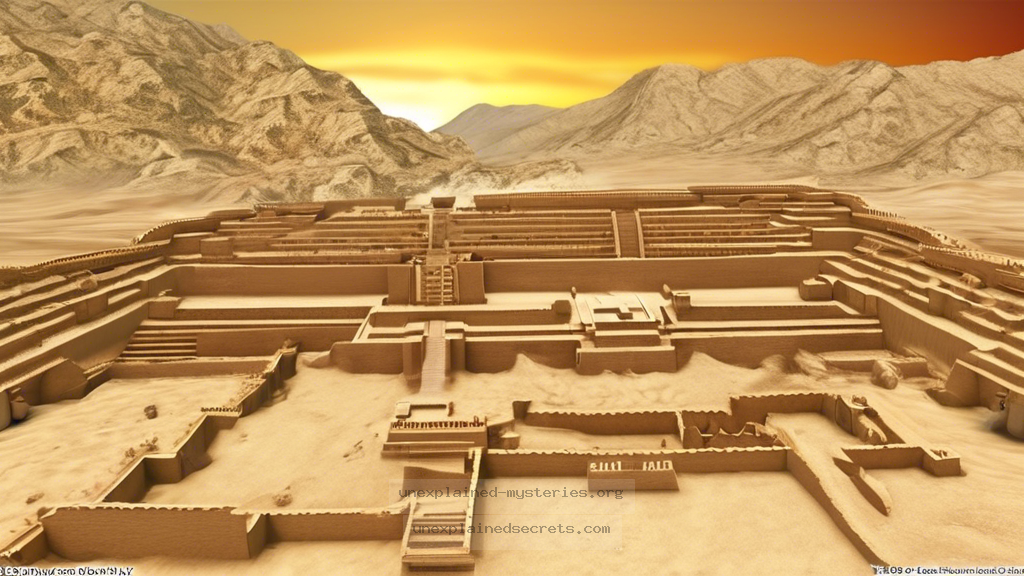What Happened to the Advanced Civilization of the Indus Valley?
What Happened to the Advanced Civilization of the Indus Valley?
The question of what ultimately led to the decline of the Indus Valley Civilization (IVC), one of the world’s earliest urban cultures, is a mystery that continues to intrigue historians and archaeologists alike. Flourishing between 3300 BCE and 1300 BCE in what is now Pakistan and northwest India, the IVC is renowned for its advanced urban planning, sophisticated drainage systems, and impressive architectural feats. Yet, despite these accomplishments, the civilization vanished, leaving behind tantalizing clues about its existence and eventual decline. This blog post will delve into this enigma, exploring the historical context, core theories, practical implications, and the ongoing research surrounding this fascinating subject.
Historical Context of the Indus Valley Civilization
The Indus Valley Civilization was one of the three early cradles of civilization alongside Mesopotamia and Ancient Egypt. With cities like Harappa and Mohenjo-Daro exhibiting remarkable urban planning, the IVC demonstrated advanced knowledge of architecture and engineering. The cities featured grid layouts, multi-storied buildings, and complex drainage systems that were unmatched at that time. The inhabitants engaged in trade, agriculture, and artisanship, leading to a prosperous society.
However, around 1900 BCE, the IVC began to decline, and by 1300 BCE, the major cities were abandoned. This decline raises critical questions about the resilience of ancient civilizations and the factors that contribute to their longevity or demise. Understanding the IVC’s fate could provide insights into contemporary societal vulnerabilities.
Core Theories Behind the Decline
Multiple theories have been proposed to explain the mysterious decline of the Indus Valley Civilization. These theories can be grouped into environmental, social, and economic factors.
- Environmental Changes: A significant theory suggests that climate change, particularly a shift in monsoon patterns, led to drought conditions that would have severely affected agriculture.
- River Shifts: The IVC relied heavily on the Indus River for irrigation and trade. Geological studies indicate that the river may have changed its course, leading to the abandonment of cities.
- Overpopulation and Resource Depletion: As the civilization grew, overpopulation may have strained resources, leading to agricultural collapse.
- Social and Political Factors: Internal strife, social upheaval, or invasions from neighboring tribes could have contributed to the civilization’s downfall.
Practical Implications of the Theories
Each of these theories has implications for understanding not only the IVC but also modern civilizations facing similar challenges. For example, climate change remains a pressing concern today. The potential for resource depletion due to human activity is echoed in the challenges faced by the IVC. By studying the IVC, we can glean important lessons regarding sustainability, governance, and resilience.
Archaeological Discoveries and Evidence
Archaeological efforts continue to shed light on the Indus Valley Civilization. Excavations have revealed a wealth of artifacts, including seals, pottery, and tools that suggest a complex and interconnected society. Notably, the discovery of the Great Bath at Mohenjo-Daro hints at possible ritualistic or social practices that may have played a role in the civilization’s cultural life.
Recent research using satellite imagery and ground-penetrating radar has identified previously unknown urban centers, expanding our understanding of the civilization’s reach. These findings support the notion that the IVC was not a monolithic culture but rather a diverse collection of city-states with varying degrees of interconnectedness.
Alternative Perspectives and Controversies
While the prevailing theories about the decline of the IVC are well-supported, alternative perspectives exist. Some scholars argue that the civilization did not collapse in the traditional sense but rather transformed into smaller, localized cultures. Evidence of continuity in certain regions suggests that some aspects of the IVC persisted long after the cities were abandoned.
Additionally, the debate over whether the IVC faced invasions or migrations from outside forces is ongoing. Some researchers propose that interactions with neighboring cultures may have contributed to both the decline and the eventual cultural amalgamation of the region.
Common Misconceptions and Clarifications
Several misconceptions persist regarding the IVC. One prevalent belief is that the civilization was entirely peaceful, with no evidence of warfare. However, the discovery of weapon-like artifacts suggests that conflict may have existed, albeit perhaps not on a large scale.
Another misconception is the idea that the decline was sudden and catastrophic. In reality, evidence points to a gradual decline influenced by multiple factors, including environmental shifts and social changes. Understanding these nuances is crucial for a more accurate historical narrative.
Best Practices for Investigation and Study
For those interested in studying lost civilizations like the IVC, a multi-disciplinary approach is essential. Here are some best practices:
- Integrating Technologies: Employing technologies such as remote sensing and GIS can uncover new archaeological sites and provide insights into urban planning.
- Cross-Disciplinary Collaboration: Collaboration between archaeologists, climatologists, and historians can yield a more comprehensive understanding of societal dynamics.
- Fieldwork and Excavation: Participating in excavations can provide firsthand experience of the challenges and methodologies in archaeology.
Future Developments and Ongoing Research
As technology advances, new methodologies continue to shape our understanding of ancient civilizations. Current research aims to uncover more about the IVC’s trade networks, social hierarchies, and daily life. The application of DNA analysis, for example, can provide insights into the genetic continuity of populations over millennia.
Additionally, the exploration of lesser-known sites may yield new data that challenges existing narratives about the IVC’s decline. Collaborative international efforts may also bring to light new information through shared resources and expertise.
Conclusion: The Enduring Mystery of the Indus Valley Civilization
The fate of the Indus Valley Civilization remains one of history’s compelling mysteries. While theories abound regarding its decline, the truth likely encompasses a combination of environmental, social, and economic factors. As modern civilizations grapple with similar challenges, the lessons learned from the IVC can inform our approaches to sustainability and resilience. The ongoing research and interdisciplinary collaboration promise to keep this ancient enigma alive, offering new insights into one of humanity’s earliest urban achievements.
Other Articles
Recent Posts
- What Happened to Flight MH370? The Conspiracy Theories That Still Haunt Us
- What Secrets Lurk Within the Walls of the Infamous Trans-Allegheny Lunatic Asylum?
- What Evidence Supports the Existence of Bigfoot in the Pacific Northwest?
- What Happened to the Indus Valley Civilization? Unraveling the Mysteries of Ancient Urban Life
- Can Telepathy Be Scientifically Proven Through Laboratory Evidence?







